It isn't nearly as difficult to listen to a recital of your faults if the person criticizing begins by humbly admitting that he, too, is far from impeccable.
Admitting one's own mistakes - even when one hasn't corrected them - can help convince somebody to change their behavior. For example, one father was trying to get his young son to stop smoking and said: "I know how difficult it is to quit. I started smoking at your age and it took me years to finally quit. hope you can learn from my mistakes and not put yourself through that."
By admitting his own faults, the father made it easier for the son to take his advice.
Section: 4, Chapter: 3
No one likes taking orders. If you want to get someone to do something, make a suggestion or ask a question rather than issuing a demand. For example:
- Not: "Get the report done by 5pm today." But: "Do you think you could have the report done by 5pm today? That would really help us meet our project deadlines."
- Not: "Rewrite this proposal." But: "What do you think of expanding more on the project scope in this proposal?"
By framing demands as questions, you give the other person a feeling of autonomy and control. They feel they are reaching their own conclusions rather than simply following your orders. It preserves their sense of agency and self-respect.
Section: 4, Chapter: 4
A manager at a department store in New York had to deal with a young salesperson who was causing customer complaints due to poor service. Instead of criticizing her directly, he called her into his office and had a conversation:
"Mary, I understand you had trouble with a customer yesterday... [Explains the situation] I'm on your side and I know you were trying your best to handle a difficult customer. However, in future situations like this, it may help to... [Provides suggestions] That way we can ensure the customer leaves satisfied and you have a positive interaction. What do you think?"
By empathizing with Mary and framing his critique as a suggestion rather than a condemnation, the manager was able to correct the behavior without Mary getting defensive. She left feeling supported rather than attacked.
Section: 4, Chapter: 2
Praise is more effective than criticism in getting people to change and improve:
- Be specific. Instead of saying "You did a good job", say "You did a good job in getting that report out under a tight deadline. I appreciate your extra effort."
- Act as if the trait or achievement you are praising is already one of the person's outstanding characteristics. This gives them a reputation to live up to.
- Refer to a person's good traits or reputation when asking them to make an improvement. "You're always so conscientious, could I ask you to take on this additional task?"
- Phrase your suggestions as questions or requests, not demands.
Section: 3, Chapter: 6
When it is necessary to point out someone's mistake, do the following:
- Start with praise and honest appreciation. It is always easier to listen to unpleasant things after we have heard some praise of our good points.
- Call attention to people's mistakes indirectly. Talk about your own mistakes before criticizing the other person.
- Ask questions instead of giving direct orders. This allows the other person to save face and feel that they are reaching the conclusion themselves.
- Praise every improvement, no matter how slight. Be "hearty in your approbation and lavish in your praise." Let the other person know you have faith in them.
Section: 3, Chapter: 2
If you want to improve a person in a certain aspect, act as though that particular trait were already one of his or her outstanding characteristics. Shakespeare said "Assume a virtue, if you have it not."
- If a child is shy and withdrawn, comment on how they are really coming out of their shell lately.
- If an employee is struggling with punctuality, comment on how you appreciate how reliable and conscientious they usually are about their schedule.
By "giving them a reputation to live up to", you subconsciously influence them with a strong motivation to prove your high perception of them is correct. Most people will work tirelessly to avoid disappointing you or tarnishing the fine reputation you have ascribed to them.
Section: 4, Chapter: 7
People are more likely to do what you want when you frame it so it is aligned with what they want. Here is a summary of how to do this effectively:
- Be sincere. Don't make promises you can't keep or offer incentives you can't provide.
- Know exactly what you want the other person to do.
- Be empathetic. Consider what it is the other person really wants out of the situation.
- Consider what benefits the other person will get from doing what you suggest. How will it advance their goals and desires?
- Match the benefits you offer to the other person's wants.
- When making your request, put it in a form that shows how the other person will personally benefit.
Section: 4, Chapter: 9
Jim Collins, the influential management theorist, analyzed the leadership styles of eleven standout companies. He was surprised to find that all were led by low-key, unassuming CEOs. These leaders were more likely to listen carefully, motivate through quiet encouragement, and have a penchant for thoughtfully assessing problems:
- Introverted leaders often deliver better outcomes than extroverts, especially when managing proactive employees
- Extroverted leaders can be so intent on putting their stamp on things that they risk losing others' good ideas
- Many effective leaders are private, cerebral types who shun the spotlight
The "extroverted charismatic" leadership style is not always as effective as pop culture suggests. In fact, organizational psychologist Adam Grant found that introverted leaders often outperform extroverts in certain situations because they're less threatened by others' input.
Section: 1, Chapter: 2
Good governance, especially at the top of the organization, is critical for an idea meritocracy to function well. Some key principles:
- Make sure no one individual is more powerful than the governance system itself. Power must be distributed, not concentrated.
- Institute strong checks and balances on power, especially at the top. No one should be beyond scrutiny.
- Ensure that decision rights are clear. Everyone should know who has what authority.
- Carefully define the scope and mechanics of voting. Not all decisions should be made by simple majority rule.
Section: 3, Chapter: 16
The author profiles how Pete Carroll established a culture of grit after becoming head coach of the Seattle Seahawks. One of his first moves was developing a shared vocabulary, including mantras like:
- Always compete (compete with yourself to get better every day)
- Practice is everything (give max effort in training, not just in games)
- Finish strong (maintain focus and intensity all the way)
- Team first (put the mission and your teammates before yourself)
Critically, Carroll focused more on process than outcomes. His core ideas emphasized things that were repeatable and controllable - competing with oneself, finishing practices strong, putting the team first. By keeping the language on effortful mastery rather than winning, Carroll made grit the bedrock of Seahawks culture.
Section: 3, Chapter: 12
While individuals can cultivate grit from the inside out, grit can also be powerfully shaped by the environment and culture in which we operate. Leaders and organizations can create a "culture of grit" that encourages passion and perseverance.
Organizational culture includes the shared language, norms, and values of a group. It's "the way we do things around here." A strong culture makes certain behaviors and mindsets feel expected and normal. Leaders like Pete Carroll of the Seattle Seahawks and Jamie Dimon of JPMorgan Chase have fostered grit in their organizations through consistent messaging, role modeling, and systems that promote and reward effortful practice, resilience, and purpose.
Section: 3, Chapter: 12
Radical Candor involves both "caring personally" and "challenging directly." Caring personally means giving a damn about people, not just professionally but personally. Challenging directly means being willing to say what you really think, even if it's uncomfortable. By combining these two dimensions, you create Radical Candor - the ability to give guidance and feedback in a way that challenges people directly while also showing you care.
Section: 1, Chapter: 1
When providing guidance or feedback to employees, follow these key tips:
- Do it immediately: The longer you wait between noticing a behavior and commenting on it, the less effective the feedback will be. Don't save up criticism.
- Do it in person: Feedback is most effective when done in person, where you can see the person's facial expressions and body language and respond accordingly. If you can't do it in person, do it live over video chat, or worst case, phone. Never give important feedback over email/text if you can avoid it.
- Criticize in private and praise in public: A good rule of thumb is to provide criticism in a 1:1 setting, while providing praise in a group/public setting. This shows respect for the individual and also helps the positive example spread.
- Don't personalize: Make the feedback about the work/behavior, not the individual. Point to specific actions and impacts vs. making it about the person's immutable traits.
Section: 1, Chapter: 2
One of the biggest blockers to building trusting relationships with direct reports is an unwillingness to give up unilateral authority and control. Using your power and authority to make others do your bidding feels good in the moment but erodes trust over time. A few tips:
- Look for small ways to give your team more autonomy - let them set the agenda for 1:1s, pick their own projects, etc. Show you trust their judgment.
- Delegate decisions - rather than being the decider on everything, empower others to make important calls. Make your role more facilitative than directive.
- Share more context and information - be transparent about what you know and where you're coming from vs. hoarding information to yourself. It enables others to make good decisions.
- Don't micromanage - once you've delegated something, resist the urge to constantly check up on it or override decisions. Let go of control while still being accountable.
Section: 1, Chapter: 5
A common mistake bosses make is thinking their job is to tell people what to do. But unilateral decision making without input and buy-in doesn't work well, especially with today's knowledge workers. People need to be influenced and inspired, not just ordered around.
The author learned this the hard way when she first joined Google and tried to reorganize her team without getting their input first. Her directives were met with resentment and pushback, and several people left the team. She realized she had to shift to a more collaborative approach.
Even leaders known for top-down authority like Steve Jobs succeeded not by ordering people around, but by engaging in debate, soliciting input, and convincingly explaining decisions. Telling people what to do doesn't work, even if you're the boss. Bosses have to learn to influence and facilitate rather than dictate.
Section: 1, Chapter: 4
For an organization to maintain its WHY, the leader must embody that belief and keep it at the center of everything they do. Leaders like Steve Jobs at Apple, Bill Gates at Microsoft, Herb Kelleher at Southwest Airlines - they all served as a personification of their company's WHY.
By staying true to their WHY in every decision and communication, these leaders provided a constant reminder to everyone inside and outside the organization of WHY the company exists. They inspired by example, not just by words alone.
However, when a leader departs, it can create a dangerous vacuum if the company has not codified its WHY beyond just the leader. The key is to ingrain the WHY into every level of the organization, so the mission lives on beyond any single leader.
Section: 4, Chapter: 8
On August 28, 1963, over 250,000 people showed up on the Washington Mall to hear Dr. Martin Luther King Jr give his famous "I Have a Dream" speech. People came because they believed what King believed, and they followed him for themselves, not for him.
Dr. King's beliefs were bigger than any single policy or issue - they were about his vision for a future of equality and justice. He gave people a sense of purpose that was linked to his purpose. That clear and powerful WHY is what inspired so many to show up on the right day, united in a shared belief in a new and better future.
Leaders like Dr. King don't just have a vision - they have a vision that others take on as their own. By clearly communicating his WHY, Dr. King was able to inspire people to spread his cause for him, creating a true tipping point for the civil rights movement.
Section: 3, Chapter: 7
There is a difference between energy and charisma in leadership. Energy, like that displayed by Microsoft CEO Steve Ballmer, can excite an audience in the moment. But that energy fades when the leader is not present. In contrast, charisma is the ability to inspire people to act even when the leader is not there.
Charisma comes from a clarity of WHY. When a leader, like Bill Gates, clearly communicates their purpose, cause or belief, it inspires people to follow them not just in the moment, but in the long run. People will continue to be inspired by a leader's charisma long after any speech or event is over.
That's because when people are inspired by a leader's WHY, they are following for themselves as much as for the leader.
Section: 4, Chapter: 8
Trust is not born out of the rational calculations of costs and benefits - it comes from a belief that another person or organization shares your values and beliefs.
For that trust to be maintained, the values of an organization must be actively managed. The WHY must be clearly communicated, and everyone must be held accountable to living those values.
Consider Walmart - Sam Walton built a retail empire on the belief in service to people and the community. But after Walton passed, Walmart lost sight of its WHY and has become embroiled in scandals as its culture suffered. On the other hand, Costco has actively managed its culture of service, generosity and providing a living wage - and has seen the benefits in loyalty and performance.
Section: 3, Chapter: 6
For a WHY to have impact, it must be communicated with clarity and authenticity. An organization amplifies its WHY through everything it says and does.
Walmart lost sight of Sam Walton's original WHY of service to people and community as it grew. Its actions (WHAT) no longer matched its intended purpose (WHY), and scandals and poor treatment of employees ensued. Virgin Atlantic, on the other hand, maintains a clarity of purpose that shines through in every product and customer touchpoint. Stunts like Richard Branson driving a tank down 5th Avenue work because they align with Virgin's WHY of shaking up established industries.
If your WHAT doesn't match your WHY, your message will be muddy and inauthentic. When WHAT and WHY are aligned through a disciplined adherence to HOW, your organization's purpose will come through loud and clear in everything you do.
Section: 4, Chapter: 10
Manipulations like price drops, promotions, fear tactics and peer pressure marketing can certainly drive short-term transactions and sales. But there is always a price to pay for the money you make using these techniques:
- Costs keep increasing as you rely more and more on manipulations
- Loyalty and trust are eroded over time as customers feel tricked
- Stress increases for both company and customer in an unending struggle
- The pattern repeats in a downward spiral as manipulations are the only way forward
If you're just focused on short-term gain, manipulations can work. But to build an enduring and loyal customer base, a deeper sense of purpose and trust is needed beyond carrots and sticks. Starting with WHY provides an alternative path.
Section: 1, Chapter: 2
For an organization to function at its best, The Golden Circle needs to be in balance:
- Clarity of WHY: The WHY must be clearly defined within the organization. It's the leader's responsibility to make sure everyone understands WHY the company exists.
- Discipline of HOW: The guiding principles and values need to be manifested in HOW things are done. Systems, processes, and operations need to be aligned with the WHY.
- Consistency of WHAT: Everything the organization says and does has to prove what it believes. WHAT you do is the proof of WHY - the reason to buy from the company, work for the company, or invest in the company. Authenticity happens when WHAT and WHY are in balance.
Section: 1, Chapter: 5
Unlike specialist corporate workers utilizing a single skill, leaders of companies of one need a generalist skill set across multiple domains:
- Psychology - Understanding customer and team motivations and decision making
- Communication - Writing clear emails, documents and presentations
- Resilience - Bouncing back from adversity and maintaining optimism
- Focus - Saying no and avoiding distractions to focus on priorities
- Decisiveness - Making smart choices quickly without getting overwhelmed
Section: 1, Chapter: 3
The stereotypical brash, dominant, extroverted leader is not the only model. Studies show introverted leaders can be very successful, especially with proactive teams. Introverts tend to listen carefully, focus deeply, and provide autonomy.
For example, Mark Zuckerberg leverages his introversion to build genuine relationships with key team members and acquihires. He empowers them with trust and autonomy rather than constant oversight. Introverts should lean into their natural strengths and collaborate with extroverted colleagues to balance things out.
Section: 1, Chapter: 3
On September 11th, 2001, New York City Mayor Rudy Giuliani faced an unprecedented crisis. Instead of trying to personally direct every aspect of the response, he focused on setting priorities, making big decisions, and empowering teams.
Giuliani had built strong relationships with his chiefs ahead of time and trusted their expertise. On 9/11, he gave them clear direction and authority to adapt as needed, without micromanaging. He focused on the What and Why, letting them handle the How. When communications broke down, teams were able to improvise and coordinate on the fly because they understood the overall intent. Giuliani's "gardener" approach, while imperfect, helped NYC respond and bounce back faster than a centralized response could have.
Section: 1, Chapter: 11
Small teams like Navy SEAL units can achieve remarkable feats of coordinated adaptation without detailed central planning. This adaptability emerges from extensive training that builds trust and common purpose among members. With shared consciousness and strong lateral ties, team members can autonomously make smart decisions that align with the team's goals. They don't need to wait for orders. While this agility is common in small teams, it's rare in large organizations, which default to top-down command structures.
Section: 1, Chapter: 5
The traditional model of the "hero-leader" who has all the answers and controls every decision is appealing, but ineffective in a complex world. Leaders who try to know and direct everything quickly become overwhelmed by the volume and velocity of decisions, creating organizational bottlenecks. They also stifle the expertise and initiative of frontline teams who often have better information. Instead of the hero-leader, complex environments require "gardener-leaders" who focus on creating the right conditions for success and empowering subordinate decision-making.
Section: 1, Chapter: 11
To achieve "team of teams" adaptability at an organizational scale, the Task Force pursued "shared consciousness" - a holistic, ever-updated understanding of the entire mission shared by all. Key elements included:
- Extreme transparency of information across units, enabled by technology
- Rich lateral ties between units to build trust and awareness
- Instilling common purpose beyond just unit goals
- Leader emphasis on the "why" behind missions, not just the "what"
When every team understands the whole system and how their choices impact others, they can combine fluidly and adapt in sync. While never perfect, shared consciousness makes the "team of teams" approach viable even in very large organizations.
Section: 1, Chapter: 6
For small teams to handle complex environments, they need two things:
- Trust: Faith in each other's reliability and commitment, often forged through shared experience and allowing autonomous action
- Common Purpose: A deep, shared understanding of the team's goals and context, so choices align without explicit coordination
When both are present, remarkable "emergent intelligence" is possible, with the team able to creatively solve problems no leader could have foreseen. But building this trust and purpose takes extensive, focused effort - it can't be shortcut. And without them, autonomy fails.
Section: 1, Chapter: 5
The head of product role is a very demanding one that has a huge impact when done well. The core competencies are:
- Talent Development - Hiring, training and coaching product managers is the most important responsibility
- Product Vision - In some companies the CEO drives the vision, in others it falls to the head of product
- Execution - Aligning the team and organization to consistently deliver on the product vision and strategy
- Product Culture - Establishing shared values and norms around customer focus, collaboration, experimentation, and business impact
Other key factors for success in the role are relevant experience, chemistry with peers, and strong collaboration with engineering and design leaders.
Section: 2, Chapter: 17
A strong product manager is critical to the product team's success. Their key responsibilities are:
- Deep knowledge of users, customers, data, the business and industry
- Defining what gets built and delivered to customers
- Ensuring what gets built will deliver the desired business results
The best product managers are smart, creative and persistent. They are technically savvy, customer-focused, and skilled at working with all parts of the organization. While they don't manage the team, they lead through influence and competence. It's a very demanding role.
Section: 2, Chapter: 10
As the organization grows, just adding more product teams is not enough:
- Leaders need to develop the skills and careers of product managers, designers and engineers. Hiring, training and coaching is their top priority.
- Leaders must ensure a holistic view of how all the products and technologies fit together, even as the number of teams expands.
- Leaders have to define the right team topology - how many teams are needed, what each team owns, how to balance autonomy and leverage, and how to minimize dependencies and empower teams.
Section: 2, Chapter: 16
Prestigious leaders create psychological safety - a climate where people feel they can speak up without risking backlash. They signal receptivity to dissent and bad news, by:
- Explicitly inviting input and skepticism
- Acknowledging fallibility and mistakes
- Giving credit and praise for those who surface problems
- Actively drawing out opinions from quieter team members
To access your team's full cognitive diversity, make space for constructive dissent. Set ground rules that encourage respectful debate. Actively draw out minority views and thank people for challenging the consensus. Publicly change your own mind in response to good arguments. Use anonymous feedback and voting to elicit unvarnished opinions. Build a culture where good-faith criticism and surfacing of problems is welcomed, not punished.
Section: 1, Chapter: 3
Dominance hierarchies are a pervasive feature of human groups. While they can enable smooth coordination, they often stifle the upward flow of ideas and information. Subordinates self-censor in the presence of dominant leaders. What feels like cohesive teamwork may in fact be an echo chamber that amplifies blindspots. Dominance is appropriate for executing plans but counterproductive for making them.
During the 1996 Mount Everest disaster, the steep authority gradient between guides and clients suppressed vital information flow that could have averted tragedy. Clients noticed troubling signs, like deteriorating weather, but didn't feel empowered to speak up forcefully to their leaders. Guides failed to elicit input and concerns from the group. The result was critical decisions being made without the full picture, leading step-by-step to catastrophe.
Section: 1, Chapter: 3
Wise groups express different properties than homogenous ones:
- They contain people with perspectives that challenge, augment, diverge and cross-pollinate, not parrot the same views
- Each person contributes useful but partial information from their region of the "problem space"
- Their collective intelligence emerges from the interaction of their diverse views In contrast, homogenous groups become echo chambers that reinforce shared assumptions. Even when composed of smart people, they collectively underperform.
Section: 1, Chapter: 2
When assembling a team, aim for germane cognitive diversity - a range of perspectives and thinking styles specifically relevant to the problem at hand. Diversity of backgrounds is beneficial insofar as it translates into diversity of insights. Random diversity for its own sake is less impactful than curated diversity aligned to the team's objectives. Focus on the sweet spot of diverse views that can meaningfully cross-pollinate.
Section: 1, Chapter: 2
Fixed mindset thinking at NASA contributed to the Challenger space shuttle disaster:
- Leaders believed NASA's past successes were due to their innate engineering genius rather than careful safety protocols.
- They became overconfident and ignored warnings about Challenger's O-ring safety hazards.
- Dissenters were seen as disloyal and sidelined. Groupthink overtook safety concerns.
- Fixing the O-ring problem was seen as an admission that they weren't the perfect engineers they believed themselves to be.
The fixed mindset culture caused leaders to prioritize protecting NASA's genius reputation over confronting and solving safety problems, with tragic results.
Section: 1, Chapter: 5
Researcher Jim Collins studied companies that made the leap from good to great and found striking mindset differences between their leaders and those of comparison companies:
Fixed mindset leaders:
- Concerned with being seen as geniuses and validators
- Surround themselves with worshipers rather than honest critics
- React to problems with denial and blaming others
- Rarely develop deep leadership bench strength in the organization
Growth mindset leaders:
- Ambitious for company success, not personal glory
- Surround themselves with the most able people
- Confront problems directly and honestly
- Develop deep leadership talent throughout the ranks
Section: 1, Chapter: 5
Leaders receive less feedback the higher they climb, increasing the risk of obvious errors ('coming to work naked'). To combat this, promote upward feedback.
- Regularly put feedback for the boss on the agenda for one-on-one meetings.
- When receiving feedback, leaders must respond with gratitude and 'belonging cues' – gestures indicating the feedback is valued and the employee's position is safe.
- Publicly thank employees for their courage in giving upward feedback.
Section: 1, Chapter: 2
Simply removing a vacation policy isn't enough; it creates ambiguity. Managers must actively set context to guide employee behavior.
- Discuss appropriate times to take vacation (e.g., avoiding critical periods like month-end close for accountants).
- Establish team parameters (e.g., 'only one person out at a time', 'ensure coverage before booking').
- Provide guidelines on notice periods for different lengths of time off.
Clear context prevents chaos and ensures freedom doesn't negatively impact team performance.
Section: 1, Chapter: 3
'When you succeed, speak about it softly or let others mention it for you. But when you make a mistake say it clearly and loudly, so that everyone can learn and profit from your errors. In other words, “Whisper wins and shout mistakes.”'
- Reed Hastings
Section: 2, Chapter: 5
Sharing sensitive information ('Stuff of Secrets' or SOS) like potential reorganizations or reasons for firing someone is crucial for building trust, but tricky. General guidelines:
* Err on the side of transparency: Tell employees about potential changes early, even if it causes anxiety. The trust gained outweighs the disruption.
* Be truthful about departures: Explain why someone was let go (sticking to work-related reasons). Avoid spin ('pursuing other opportunities') as employees see through it. Openness prevents gossip and reinforces standards.
* Respect personal privacy: If an issue relates to personal struggles (e.g., health, addiction), let the individual decide what to share.
* Admit your own mistakes openly: This builds trust and encourages risk-taking.
Section: 2, Chapter: 5
Instead of controlling employee actions through approvals and processes, effective leaders at Netflix lead with context. They provide the strategic information, goals, and alignment necessary for employees to make great decisions autonomously.
This requires:
* High talent density (trustworthy employees)
* Focus on innovation (vs. error prevention)
* A 'loosely coupled' system (departments can operate independently)
* High alignment (shared understanding of goals/strategy)
When a leader fails to set adequate context, employees may make poor decisions; the solution is more context, not more control.
Section: 3, Chapter: 9
Forget fancy gyms or free sushi. The greatest workplace perk is the joy of being surrounded by stunning colleagues. High performers thrive and are motivated when they work alongside other talented, collaborative people who push them to be better.
As a leader, your primary goal should be to build and maintain the highest possible talent density. This means having the courage to let go of 'adequate' performers, even nice ones, because they invariably drag down the team's overall performance and efficiency.
Section: 1, Chapter: 1
'When one of your people does something dumb don’t blame them. Instead ask yourself what context you failed to set. Are you articulate and inspiring enough in expressing your goals and strategy? Have you clearly explained all the assumptions and risks that will help your team to make good decisions? Are you and your employees highly aligned on vision and objectives?'
- Reed Hastings
Section: 3, Chapter: 9
Netflix aimed to foster flexibility and innovation, avoiding the stifling rules common in growing companies. The core idea evolved into 'Freedom and Responsibility'. Instead of control processes, Netflix focused on:
- Building up talent density: Hire and retain only high performers, removing the need for rules designed to manage mediocrity.
- Increasing candor: Encourage constant, honest feedback loops so employees hold each other accountable and improve performance.
- Reducing controls: With high talent and candor, remove policies (vacation, expenses) and approvals, trusting employees to act responsibly.
Section: 1, Chapter: 0
Pixar, the studio behind beloved films like Toy Story and The Incredibles, is known for its culture of creativity and constant improvement. A big part of that stems from making rethinking a regular practice:
- The Braintrust - a group of the studio's top creative minds - meets regularly to give candid feedback on work in progress. The focus is on identifying problems, not proposing solutions.
- Employees are encouraged to be "candid and constructive" in their critiques. Managers emphasize that a rigorous critique is a sign of respect, not disregard.
- Teams engage in "plussing" - building on each other's ideas rather than tearing them down. The goal of feedback is to maximize potential, not minimize errors.
- Directors actively seek input from colleagues throughout the production process, normalizing iteration. Early mock-ups are presented specifically to spark rethinking.
Section: 3, Chapter: 10
- Urgency: When a crisis arose, Intel's leadership responded within weeks to set and communicate a clear, focused objective to the entire company.
- Clarity: From the CEO down, everyone knew exactly what the objective was and how their work connected to it. No ambiguity.
- Alignment: Every team, from engineering to marketing to sales, set their own OKRs in service of Operation Crush. While the key results differed, the overarching objective unified everyone.
- Tracking: Regular check-ins and grading enabled leaders to monitor progress, identify obstacles, and make adjustments as needed.
- Stretching: The 2,000 design win goal was hugely ambitious. But it motivated people to rethink old approaches and deliver amazing results.
Section: 1, Chapter: 3
For OKRs to drive focus and execution, leaders need to:
- Actively demonstrate their own commitment to OKRs by regularly tracking and discussing them
- Consistently communicate the importance of OKRs for the company's success
- Ensure their executive team bought into and modeled the process
- Hold people accountable for following through on their OKRs
Jini Kim advises other leaders: "The OKR process takes discipline, commitment and iteration to work. Don't get discouraged if it feels hard at first. Stick with it and make it your own."
Section: 1, Chapter: 6
When Atticus Tysen took over IT at Intuit, he faced a big challenge. His 600-person org was operating in silos, pursuing disparate objectives. There was little visibility into how different sub-teams' work laddered up (or didn't) to Intuit's strategic priorities. To address this, Tysen rolled out OKRs across his entire org. Through the OKR process, Tysen and his leadership team:
- Defined 3-5 clear, aspirational objectives for IT as a whole
- Translated these into measurable, time-bound key results
- Had each sub-team and individual define their OKRs to support the top-line goals
- Made everyone's OKRs visible across IT
- Established frequent check-in points to track progress, identify dependencies and remove barriers
Section: 2, Chapter: 9
The "first follower" principle has many applications, but a key one is to build psychological safety on your team:
- When someone shares a dissenting opinion or crazy idea in a meeting, publicly thank them and engage with their view, even (especially) if you disagree. Doing so will encourage others to voice unorthodox thoughts as well.
- If a team member admits a mistake or failure, appreciate their honesty and vulnerability. Demonstrating that it's safe to take interpersonal risks will inspire others to do the same.
- When you notice someone going out of their way to support or include others, shine a spotlight on their actions so it becomes a model for the group.
Section: 1, Chapter: 3
Ed Catmull, co-founder and former president of Pixar Animation Studios, is no stranger to failure. Catmull estimates that only about 1 in 100 ideas that are pitched at Pixar actually make it to the screen - and even then, they go through countless iterations and revisions along the way.
But rather than seeing these "failures" as setbacks or wastes of time, Catmull and his team see them as invaluable opportunities for learning and growth, and developed a number of practices:
- Daily reviews where work in progress is shared and critiqued by the entire studio
- "Plussing" sessions where people build on each other's ideas rather than tearing them down
- Regular "Braintrust" meetings where a small group of trusted advisors give candid, constructive feedback on a project at key milestones
- Postmortems after each film to capture lessons learned and identify areas for improvement
The goal of these practices is not to eliminate failure, but to make it safe and productive, by creating an environment where people feel comfortable taking risks and learning from their mistakes.
Section: 3, Chapter: 16
Several leaders use a surprising tactic to build their team's self-sufficiency and problem-solving skills - they make themselves scarce at key moments. By leaving a strategic void, they create space for the team to step up and take charge of their own learning and performance.
- Gregg Popovich regularly huddles with his assistant coaches during timeouts but occasionally skips the player huddle, leaving them to figure things out
- The New Zealand All-Blacks rugby team has a standing policy that the coaches cannot attend the first 15 minutes of any practice; the players are expected to warm up and set the tone on their own
In each case, the leader's absence is not an abdication but a challenge and an opportunity. It sends the message, "You are capable of doing this yourselves, and I trust you to rise to the occasion."
The key is for the leader to scaffold these "missing leader" moments carefully - they work best when the team has a foundation of trust and shared purpose to build on.
Section: 1, Chapter: 6
Purpose is a strategic asset that guides actions and decisions in the face of uncertainty. To harness its power, leaders must regularly revisit and recommit to purpose, connect people's work to the larger mission, celebrate purpose-driven behaviors, and empower judgment calls that serve the greater good. Embodying purpose in a crisis can make the difference between a team that fractures or emerges stronger.
Section: 3, Chapter: 17
One of the hardest parts of building a cohesive culture is learning to tolerate the discomfort, inefficiency and messiness of open, honest conversations. Giving and receiving real-time candid feedback, admitting mistakes, confronting conflicts, and reflecting on tough challenges is awkward and painful.
But the leaders in this book emphasize that you have to push through that resistance. The pain isn't a problem but a sign of progress. You will realize that the hard, scary conversations are the real work of building a great team. Some ways to embrace the productive discomfort:
- Institute regular AARs (after-action reviews) to reflect on successes and failures
- Hold open forums where people can ask leaders anything, no matter how sensitive
- Practice sharing unfinished, imperfect work to get feedback from peers
- When conflicts arise, resist the urge to smooth things over; support the team to confront the tensions head-on
Section: 1, Chapter: 4
"Vulnerability doesn't come after trust - it precedes it. Leaping into the unknown, when done alongside others, causes the solid ground of trust to materialize beneath our feet."
Section: 2, Chapter: 8
Giving feedback is one of the most important skills for any leader, but it's also one of the most dreaded and mishandled. Here's a simple formula for delivering feedback that is clear, specific, actionable, and motivating:
- Describe the behavior or situation objectively, without judgment or interpretation.
- Explain the impact of the behavior on you, the team, or the work product.
- Ask for the person's perspective and listen actively. Ex: "I'm curious to hear your take on what happened. What was going through your mind at that moment?"
- Reaffirm your commitment to the person's success and growth.
- Agree on a specific, measurable action to try going forward.
Ex: "In our next meeting, let's pay attention to how much airtime each person gets and make sure everyone has a chance to finish their thoughts"
Section: 2, Chapter: 12
The most effective problem-solving groups share a common trait - they prioritize intellectual humility over individual status or ego. Intellectual humility is the willingness to admit what you don't know, to welcome new and contradictory ideas, and to change your mind in the face of compelling logic or evidence. To model intellectual humility as a leader:
- Frame questions neutrally: "What am I missing?" vs. "Does anyone disagree with my idea?"
- Give people permission to challenge your thinking: "I could be wrong, so tell me if you see it differently"
- When someone raises a contrary view, thank them for it: "I'm so glad you brought that up; it made me rethink my assumptions"
- Call out groupthink: "I'm worried we're getting too bought into this plan - who can poke holes in it?"
- Reward people not just for being right, but for successfully changing the group's mind
Section: 2, Chapter: 7
Building safety is a fluid, improvisational skill, akin to learning to pass a soccer ball to a teammate during a game. It requires you to recognize patterns, react quickly, and deliver the right signal at the right time to show your people they are valued and connected.
Displaying belonging cues (such as affirmative body language and spotlighting our own vulnerability) consistently over time will get the "static out of the way" and allow your people to do their best work together. As NYU professor Jay Van Bavel says, "A mere hint of belonging is not enough; one or two signals are not enough. We are built to require lots of signaling, over and over."
Section: 1, Chapter: 1
In improv comedy, one of the cardinal rules is "yes, and" - when your partner initiates an idea, you're obligated to affirm and build on it vs. ignoring or contradicting it. The most skilful improvisers are relentless in their focus on hearing the offer behind their partner's words and actions. Instead of planning their own agenda, they tune into the other person and allow the conversation to emerge organically.
Section: 1, Chapter: 6
Books about Leadership
Personal Development
Leadership
Communication
Relationships
Persuasion
How to Win Friends and Influence People Book Summary
Dale Carnegie
How to Win Friends and Influence People is a timeless guide that teaches you how to handle people, manage relationships, and navigate complex social situations with grace, tact, and sincere appreciation for others, so that you can achieve your maximum potential in both your personal and professional life.

Psychology
Personal Development
Sociology
Leadership
Quiet Book Summary
Susan Cain
"Quiet" explores how the Extrovert Ideal became the cultural norm in the 20th century, explores the often undervalued strengths of introverts, and argues that we need a greater balance of both personality types to thrive in work, relationships, and society as a whole.

Personal Development
Leadership
Personal Development
Principles Book Summary
Ray Dalio
In Principles, Ray Dalio shares the unconventional principles he developed, refined, and used during his 40-year career to create unique results in both life and business - and which any person or organization can adopt to help achieve their goals.
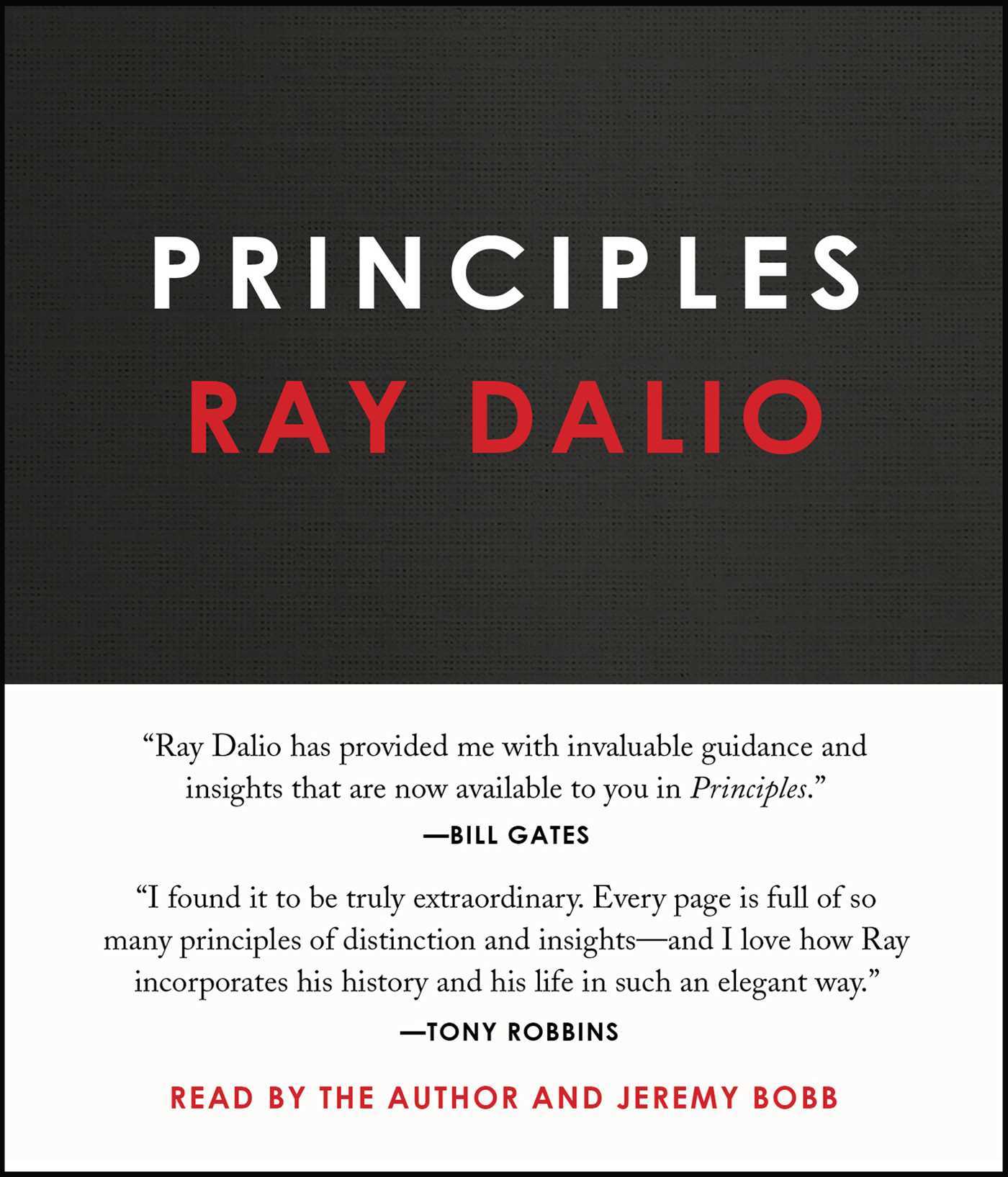
Personal Development
Self-Help
Leadership
Grit Book Summary
Angela Duckworth
In "Grit: The Power of Passion and Perseverance," Angela Duckworth argues that the secret to outstanding achievement is not talent, but a special blend of passion and persistence she calls "grit."

Management
Leadership
Communication
Business
Radical Candor Book Summary
Kim Malone Scott
Radical Candor is a management philosophy that emphasizes caring personally about your team while also challenging them directly, creating a culture of feedback, trust and high performance.
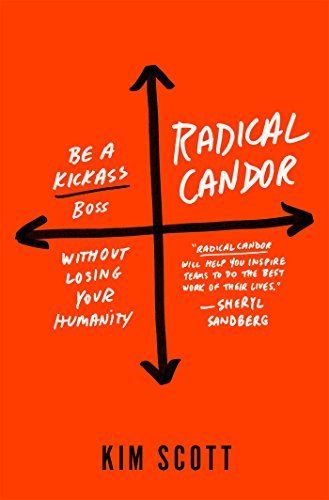
Management
Leadership
Business
Entrepreneurship
Start With Why Book Summary
Simon Sinek
Start with Why offers a powerful framework for how leaders and organizations can inspire others, build trust and loyalty, and achieve long-term success by clearly articulating and staying true to their purpose, cause or belief.
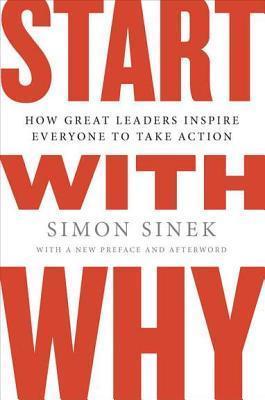
Business
Entrepreneurship
Leadership
Personal Development
Company Of One Book Summary
Paul Jarvis
In "Company of One," Paul Jarvis makes a compelling case for staying small and questioning growth in business, arguing that by staying lean, agile, and customer-focused, you can build a sustainable and fulfilling business on your own terms.

Self-Help
Psychology
Leadership
Business
Communication
Super Communicators Book Summary
Charles Duhigg
Who and what are supercommunicators? They're the people who can steer a conversation to a successful conclusion. They are able to talk about difficult topics without giving offence. They're brilliant facilitators and decision-guiders. How do they do it?
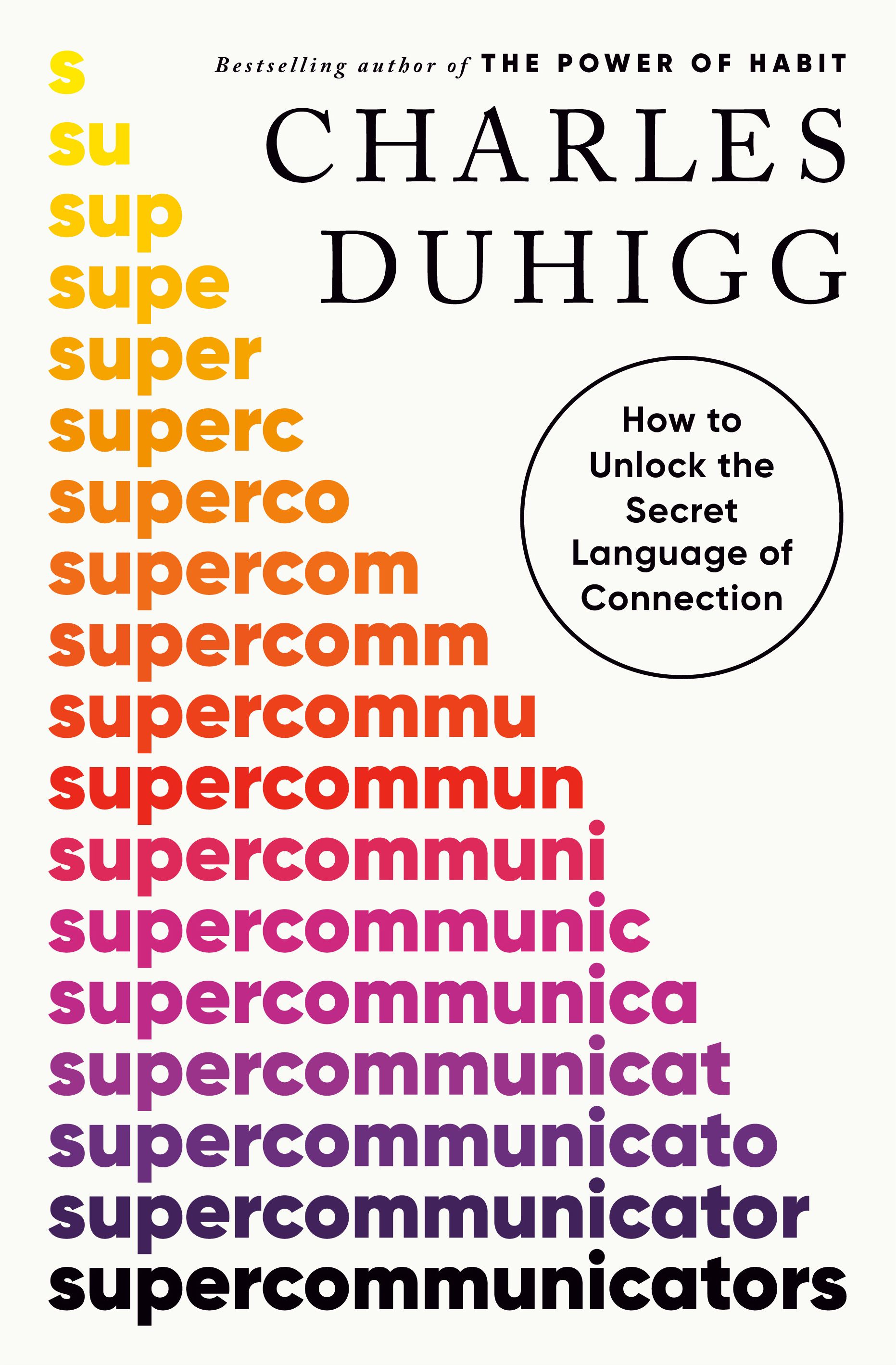
Management
Leadership
Business
Strategy
Team of Teams Book Summary
Stanley McChrystal
In Team of Teams, General Stanley McChrystal shares powerful lessons on how organizations can adapt and succeed in complex, rapidly changing environments by breaking down silos, empowering teams, and fostering a culture of trust, transparency, and decentralized decision-making.
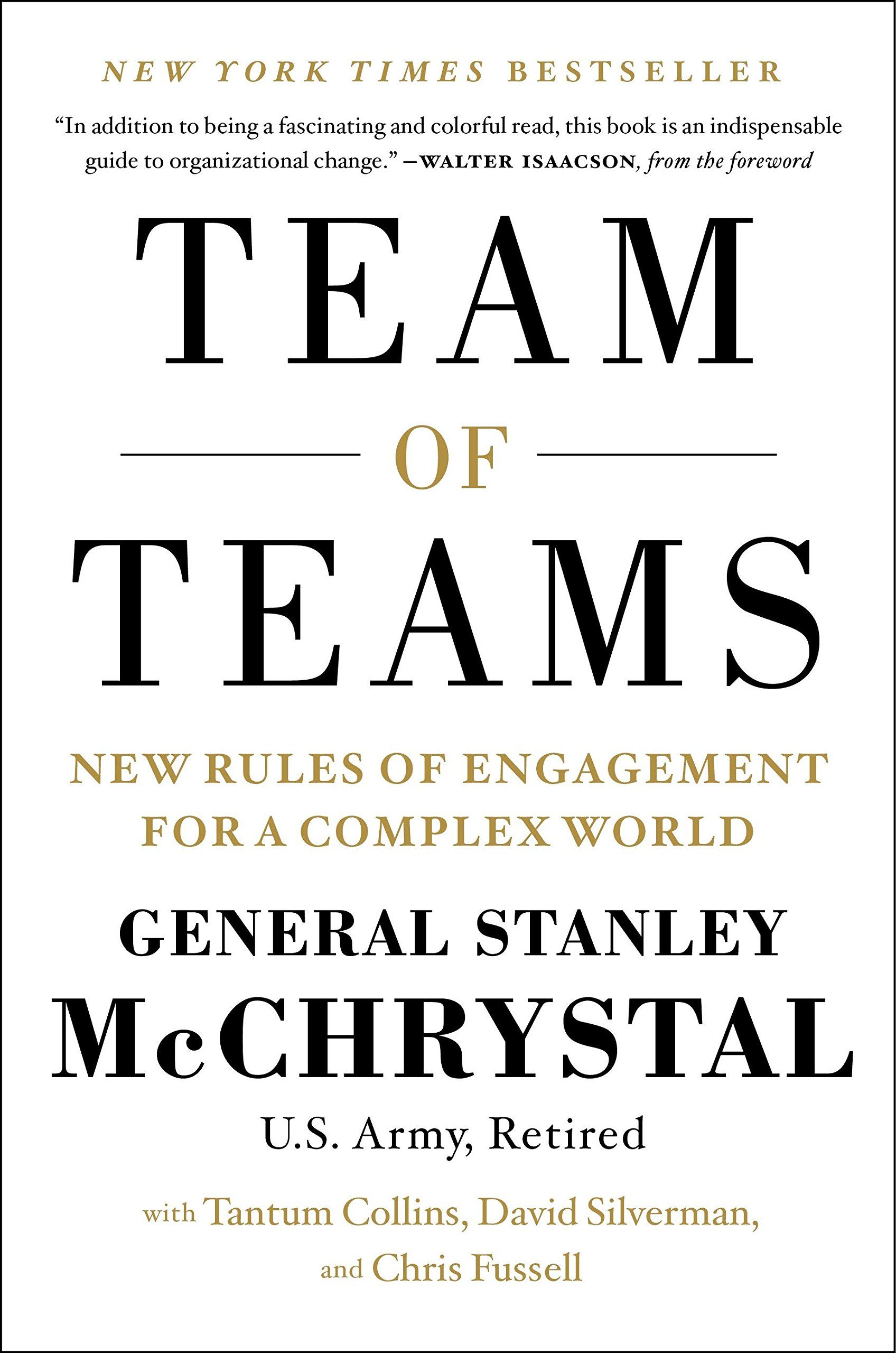
Philosophy
Personal Development
Leadership
Productivity
The Obstacle Is the Way Book Summary
Ryan Holiday
The Obstacle Is the Way presents a practical formula for overcoming life's challenges and achieving success by controlling perceptions, taking decisive action, and cultivating an indomitable will.
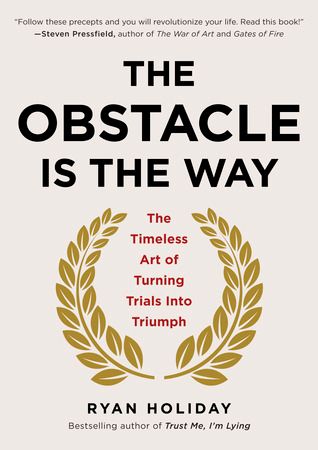
Business
Technology
Management
Inspired Book Summary
Marty Cagan
"Inspired" reveals the essential mindsets, principles and techniques used by leading tech companies to create products that customers love.
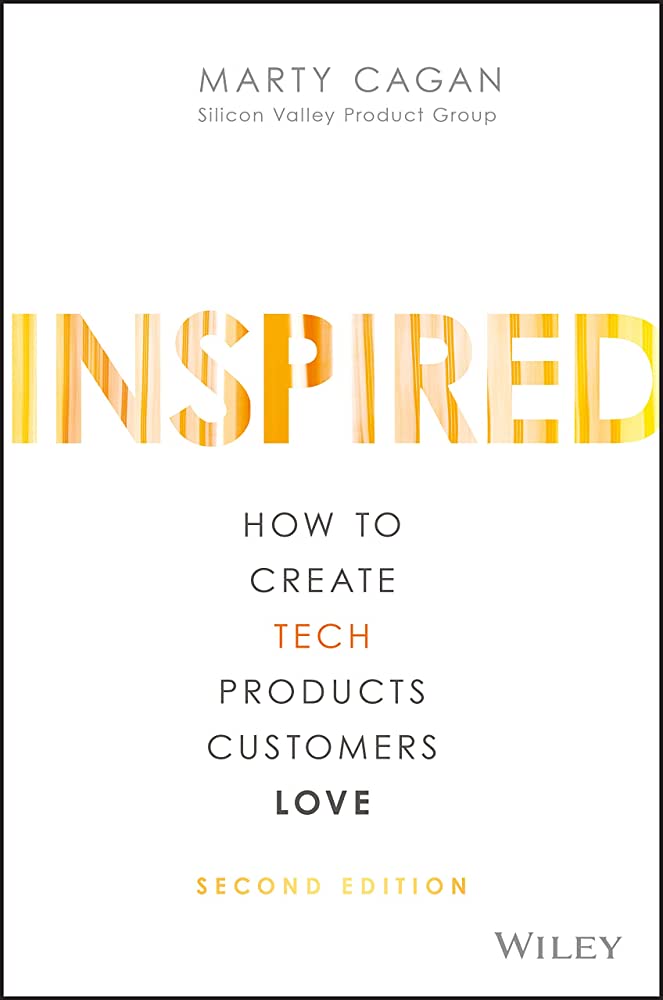
Leadership
Feminism
Business
Biography
Lean In Book Summary
Sheryl Sandberg
In Lean In, Sheryl Sandberg examines the barriers women face in achieving leadership roles and offers compelling, research-based advice on what women can do to overcome these obstacles and achieve their full potential in both their professional and personal lives.

Psychology
Innovation
Business
Leadership
Rebel Ideas Book Summary
Matthew Syed
Matthew Syed reveals the vital ingredient missing from our understanding of success: cognitive diversity. Rebel Ideas shows how bringing together different insights, perspectives and thinking styles turbocharges creativity, problem-solving and decision-making, to improve performance in today's complex world.
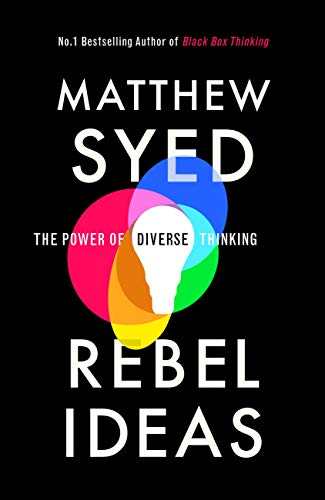
Learning
Education
Psychology
Personal Development
Mindset Book Summary
Carol Dweck
Mindset reveals the power of our beliefs to shape our lives, and shows how adopting a growth mindset - the belief that abilities can be developed through dedication and hard work - can help us achieve more than we ever thought possible in every area of life.

Business
Management
Leadership
Culture
Organization
Human Behavior
No Rules Rules Book Summary
Reed Hastings, Erin Meyer
Unlock the secrets behind Netflix's phenomenal success with 'No Rules Rules'. Discover how a culture built on talent density, radical candor, and removing controls fuels innovation, speed, and adaptability in the face of constant change.

Psychology
Business
Personal Development
Think Again Book Summary
Adam Grant
Think Again is a compelling exploration of the power of knowing what you don't know, and how embracing the joy of being wrong and actively questioning your opinions can help you make better decisions

Persuasion
Communication
Business
Psychology
Influence Book Summary
Robert Cialdini
Influence is the quintessential guide to the six universal principles of persuasion - reciprocation, commitment and consistency, social proof, authority, liking, and scarcity - that shape our decisions and behavior, often without our conscious awareness.
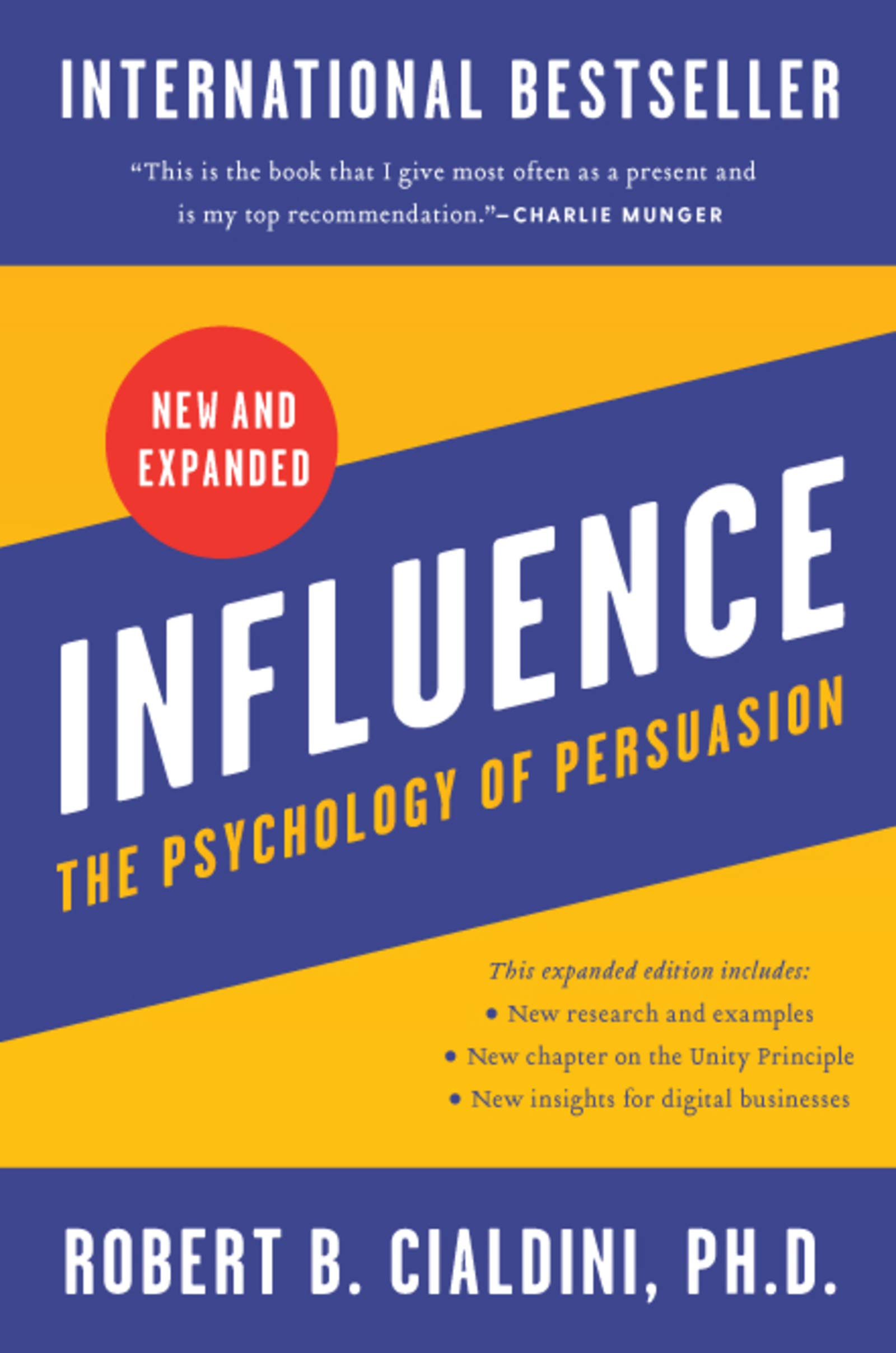
Management
Entrepreneurship
Leadership
Business
The Lean Startup Book Summary
Eric Ries
The Lean Startup offers a scientific approach to creating and managing startups and getting a desired product to customers' hands faster, based on validated learning, rapid experimentation, and counterintuitive practices that shorten product development cycles, measure actual progress, and learn what customers really want.
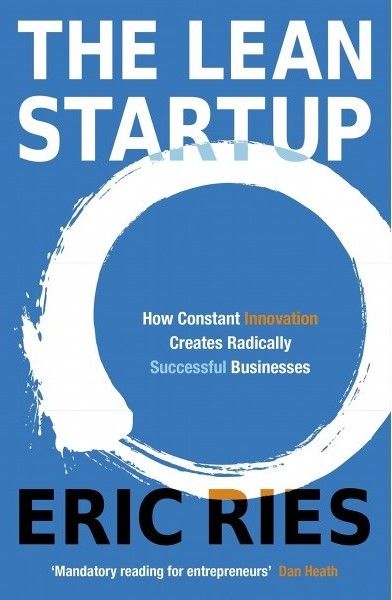
Business
Management
Leadership
Entrepreneurship
Measure What Matters Book Summary
John Doerr
Measure What Matters is the essential guide for using Objectives and Key Results (OKRs) to drive focus, alignment, and extraordinary performance at every level of your organization.

Leadership
Management
Business
The Culture Code Book Summary
Daniel Coyle
The Culture Code reveals the secrets of highly successful groups, showing that the key to unleashing a team's full potential lies in creating a culture of safety, shared vulnerability, and purpose.


